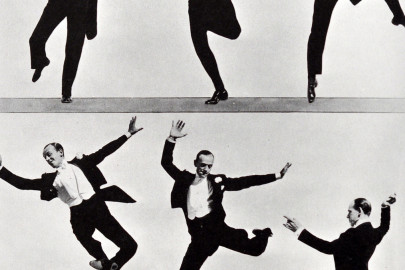
This is not so much an opinion as a fact. And to say that so-called Minimalist Music was borne out of the dope clouds and LSD trips of the sixties seems wide of the mark: Anton Webern and the other members of the Second Viennese School were saying more, with less, thirty years before Terry Riley took his first puff of weed. If this music has a common denominator it is the ‘pulse’ or engine that we all recognize, usually established by the repeated ostinati of crotchets (quarter notes) or quavers (eighth notes), with ‘layers’ being added as the piece moves forward. Monotony (or hypnotony if you happen to be stoned) is avoided by occasional changes in ‘texture’ or in time signature. Unsurprisingly shamans and charlatans are fairly thick on the ground in this genre, but today we drop in on a handful of genuine artists who have left the twilight-zone and entered the mainstream.
Born in Baltimore in 1937, Philip Glass learned serious music at the workbench of his father, who earned a crust servicing radios and selling records. A spell in Europe with Darius Milhaud and Nadia Boulanger took care of the technical side, and soon after he was hired by the alcoholic film maker Conrad Rooks to transcribe Indian ragas, which in turn led to a meeting with sitar virtuoso Ravi Shankar, and subsequent studies of eastern musical forms. His composing career began to take off in the 1970’s with several film scores, operas, symphonies and concerti and scores of incidental pieces; and collaborations followed with various popular musicians, including Paul Simon, David Bowie, Laurie Anderson and David Byrne. Here is part of his searching score for the Stephen Daldry movie The Hours.
Where Glass wanders through every musical genre imaginable, his exact contemporary Steve Reich embraced a more cerebral, almost algebraic approach to sounds by employing a ‘phasing effect’ that is best heard in his famous two-hander (literally) Clapping Music from 1972. Here his basic idea of taking two identical musical strands, and moving them gradually out of sync with each other, is reduced to two ‘performers’ only. They create ever changing rhythmic textures by one ‘clapper’ repeating the 12/8 pattern for the duration. The other clapper uses the exact same pattern, but after every eight or twelve bars, this clapper moves one quaver to the left. When this process of shift has been repeated twelve times – or 144 bars later – they should be back in unison. The concentration needed for even a six minute performance is unimaginable – and we lightly skip over this by the application of modern technology, and this seminal scene from the great John Boorman movie Point Blank, where the delightful Angie Dickinson tries to damage Lee Marvin’s man-of-stone, Walker.
A glance at the titles of a couple of compositions by Californian Terry Riley would go some way to explaining why the music establishment have given him a wide berth for over forty years. But ‘Poppy Nogood and the Phantom Band’, and ‘The Persian Surgery Dervishes’ are both complex and deeply serious pieces that move on from Riley’s epochal ‘In C’, the composition that briefly grabbed me back in the haze (don’t ask) of the early 70’s. These multi-layered, polymetric, eastern flavoured improvisations set the bar for the new-agers that sprang up a decade later and, musically, morphed into groups like Soft Machine and Tangerine Dream. Here, Riley’s deep seriousness is perfectly illustrated in his own performance from 2000 of The Philosopher’s Hand, a meditation upon the recent loss of a teenage friend.
The music of Yorkshireman Gavin Bryars is not exactly minimalist; in fact it is not exactly anything that will comfortably accept a label. It is lean, yet sensual. It appears to shun bar-lines, yet it has a pulse. It follows no recognizable musical path, but in a very bloody-minded ‘Yorkshire’ way, it creates it’s own soundscape, and then walks into it. Several months ago in this sunday reverie we met Bryars’ extraordinary ‘Tramp’, a tape loop of a soon-to-die old man recorded near London’s Waterloo, which became a world-wide cult classic. Today an even more stunning contemplation of an event that most of us know about, if only from a pretty gruesome recent movie. Bryars has described The Sinking of the Titanic as ‘the musical equivalent of work of conceptual art’, and I struggle to better that. The central conception of the piece focuses on the band, a string sextet, playing the Episcopal Hymn ‘Autumn’ as the boat slowly sinks, nose first, into the icy Atlantic; this much we know as a radio operator, one of just 711 survivors, reported that he ‘did not hear the band stop playing’. Bryars then imagines how the hymn would sound as the waters enveloped the players, and continues to speculate musically as the boat drifts downward, settling on the bottom. On the complete early version there are many overlaid effects such as the creaking of the giant steel plates of the liner as the pressure builds up upon them and, more poignantly, the sound of children singing, but heard as through a mist of dreams. Here is just a brief extract to give you the flavour, placed last because I don’t imagine anything following this wonderfully imaginative score.











Another lovely selection. Particularly enjoyed Steve Reich’s clapping music, though too much of it and I think I would start clapping the stereo to try and make it stop.
“1, 2, 3, 4,- 1, 2, 3, 4, 5, 6, -1, 2, 3, 4, 5, 6, 7, 8″ The famous beat counting chorus from Einstein on the Beach, musicality of an altogether different order, the singers disagreed and went on strike.
We have both Einstein and Akhnaten, fortunately on cassette and therefore no longer playable.
The sets for Akhnaten were fantastic, the stage direction spine tingling. The music however was akin to working on Luton’s Vauxhall Viva assembly line.
Nice seeing Point Blank mentioned, a much underrated movie, Marvin’s finest and accompanied by Dickinson in one of her can’t act for toffee roles.
There is an odd link here, Glass studied with one of the Boulanger girls as did John Eliot Gardiner whose father was an Egyptologist.
Oh, all right then, not that much of a link more a linkette really.
That Clapping Music is wild!
Nice selection. There is a strand of parallel but I think unrelated “minimalism” in the former USSR… folk like Arvo Part and Vladimir Martynov. I saw Martynov perform live several times and he would gradually build relatively complex pieces up out of almost nothing, or what seemed like nothing, alone, at the piano. But I can barely play guitar so i had no idea what he was doing.
You knew exactly what Martynov was doing DK – he was building ‘relatively complex pieces up out of almost nothing’ – that’s what these guys do. And, in a way, that is what most composers have done for 500 years.
Agree with you Malty about Point Blank, though I always imagined that it was rather highly thought of, generally. However, I don’t remember being too distressed by Angie Dickinson’s thespian ability as a gangster’s moll; just her being there was enough for me.